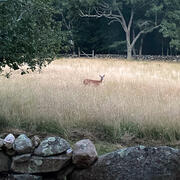Threats
Fish and wildlife are experiencing increased threats from climate change, land use, drought, extreme storm events, and invasive species and disease. We are studying how species populations and distributions respond to threats and provide managers with the tools and technologies to choose the most effective management strategies to support species now and into the future.













